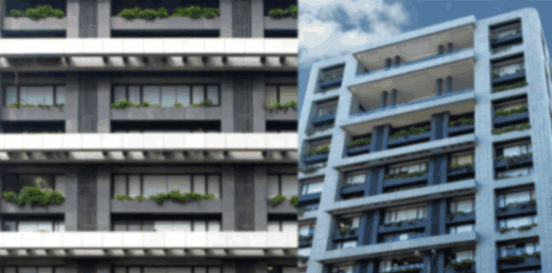
The Future of Commercial Building Architecture: Innovations Shaping Urban Spaces
Commercial building architecture is undergoing a paradigm shift, blending sustainability, technology, and modern aesthetics to create smart, functional spaces. From energy-efficient designs to multi-functional workspaces, contemporary commercial buildings are setting new benchmarks in urban landscapes. One exemplary project that highlights these advancements is Ceejay House, a landmark development in Mumbai by Talati and Partners.
Modern commercial buildings are embracing smart architecture, incorporating automated climate control, energy-efficient facades, and AI-driven security systems. Ceejay House exemplifies this trend with its sustainable design, seamless spatial planning, and cutting-edge construction techniques. The integration of curved edges, cascading planters, and openable windows enhances both aesthetics and energy efficiency.
Smart commercial buildings are also leveraging IoT-based monitoring systems to track energy usage and optimize building operations. Features like smart lighting, occupancy sensors, and AI-driven HVAC systems contribute to sustainability while reducing operational costs. As a result, these buildings ensure efficiency without compromising on design or functionality.
Sustainability is now a cornerstone of commercial architecture. Buildings like Ceejay House prioritize eco-friendly materials, green terraces, and passive cooling techniques to reduce environmental impact. Notable features include:
Furthermore, the integration of renewable energy sources, such as solar panels and wind energy systems, has become an essential feature of modern commercial structures. These additions reduce the carbon footprint and make commercial spaces more self-sufficient.
Modern businesses demand flexible workspaces that cater to evolving needs. Ceejay House incorporates flat-slab construction, enabling large, column-free spaces that can be customized for different business requirements. Its double-height premium showrooms and 220-foot atrium introduce natural light and create dynamic environments for productivity.
Additionally, the concept of mixed-use commercial spaces is gaining momentum. Buildings now combine office spaces, retail outlets, co-working hubs, and recreational areas within a single structure, enhancing convenience for professionals and visitors alike.
High-end commercial buildings are redefining workplace experiences by integrating luxury elements. Ceejay House, for example, features a residential sky villa, a private penthouse with a swimming pool, and panoramic city views. The distinct separation of commercial and residential zones, coupled with exclusive entry points, enhances privacy and exclusivity.
Beyond just luxury, these buildings emphasize well-being-centric designs that promote productivity. Features such as biophilic design, indoor gardens, ergonomic furniture, and dedicated relaxation zones help create healthier work environments.
As cities grow, commercial buildings will continue evolving towards sustainability, automation, and user-centric designs. Innovations such as modular construction, renewable energy integration, and AI-driven space optimization will play a crucial role in shaping the future skyline.
The incorporation of 3D printing, prefabricated modular units, and net-zero energy buildings will become standard practice. These cutting-edge solutions will make commercial structures more adaptable, environmentally friendly, and efficient.
Ceejay House stands as a testament to the fusion of design intelligence, sustainability, and functionality, setting a benchmark for commercial building architecture worldwide. As the industry continues to evolve, the integration of technology, eco-conscious design, and flexible planning will define the commercial spaces of the future.
© 2024 Crivva - Business Promotion. All rights reserved.